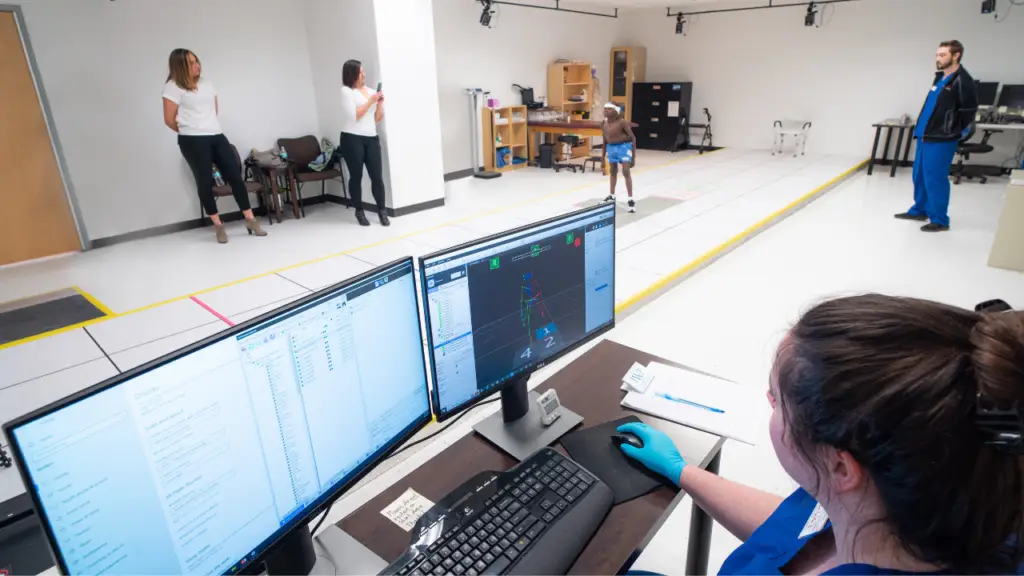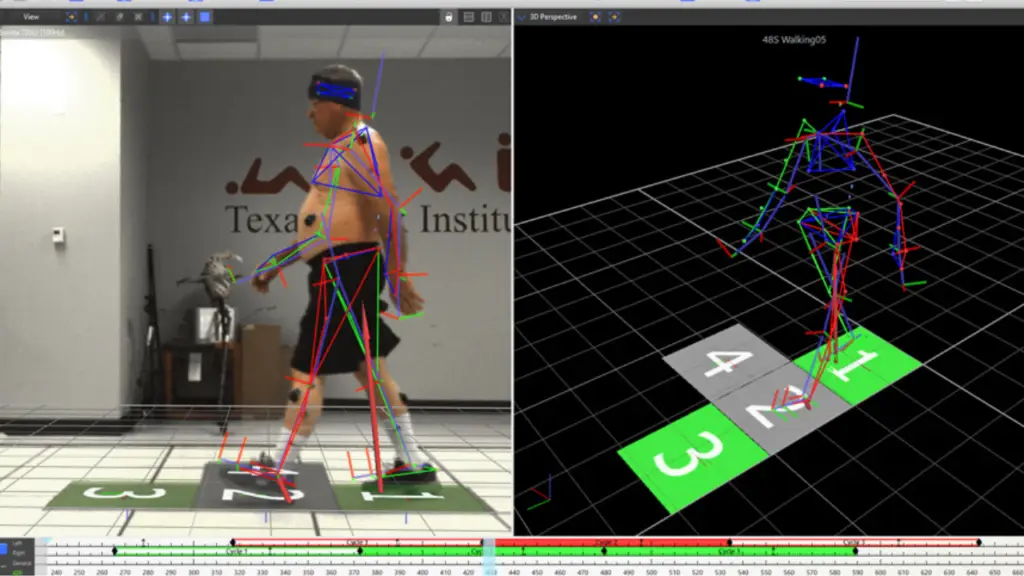In a recent medical feature, news network CNN explained an often overlooked health indicator—gait.
“Gait is the way in which you walk,” the report noted. “While everyone’s gait differs, you may develop an abnormal gait due to illness, injury, genetics, or issues with your legs or feet. Abnormal gaits are characterized by irregular movements such as dragging your feet, waddling, or crossing your legs as you walk. Your walking speed can also be an indicator of your health. In fact, it’s gaining traction as one of your vital signs, along with body temperature, pulse rate, respiration rate, blood pressure, and oxygen saturation.”
What This Means for You — Spinal conditions may affect gait, and for this reason, Texas Back Institute, a world-class diagnostic, treatment, and research practice, began testing this indicator in its Spine Biomechanics Lab.
The Spine Biomechanics Laboratory at Texas Back Institute investigates the biomechanical and neuromuscular risk factors associated with spinal ailments to define the most appropriate and effective treatment options. This lab is a critical component in bridging the basic science of biomechanics and engineering with the clinical science of spinal care. The clinicians and scientists involved with the lab are uncompromising in furthering the treatment of spinal pathology and translating that knowledge into advanced care for the patients they serve. To learn more, just click here.
An Expert Explains the Significance of Gait
Dr. Alexander Satin is an orthopedic spine surgeon at Texas Back Institute, and his knowledge of the mechanics of gait makes him a valuable resource for explaining why this can be an indicator for spine conditions and other diseases.

“Normal gait involves the precise coordination of balance and movement,” Dr. Satin notes. “This is orchestrated by the nervous system and relies on constant feedback between the extremities and the brain.
“Interestingly, human gait has been characterized as a series of constant “falls” where the legs act to minimize energy expenditure and displacement of the body’s center of mass. As one would expect, many musculoskeletal and neurologic disorders can result in disruption of these functions and impaired gait. Ambulation (walking about) for these patients require significantly increased energy expenditure, resulting in fatigue and reduced quality of life.”
What other spinal conditions can indicate disease or serious physical problems?
Dr. Satin explains, “A wide range of conditions can result in impaired gait and balance. This includes both problems related to the spine and problems unrelated to the spine, such as strokes, amputations, and hip arthritis.
“With regards to the spine, we have utilized the Spine Biomechanics Lab to study patients with spinal deformity (scoliosis), lumbar stenosis (nerve compression in the back), sacroiliac joint dysfunction, lumbar spondylolisthesis (slipped disc), and cervical myelopathy (symptomatic spinal cord compression in the neck).
“Our gait lab analysis doesn’t necessarily uncover these conditions. Rather, the lab allows us to better understand our patients and track their progress over time. The traditional way to measure spine surgery outcomes involves patient-reported outcome measures (PROMs). These tools allow us to assess patients before and after surgery. However, they can be limited by several factors and are often subjective. The gait lab provides objective data to better measure patient outcomes after surgery.”

Other Conditions Currently Being Researched
“Here at TBI, we are currently studying the impact of cervical radiculopathy (symptomatic nerve compression in the neck) on sleep,” Dr. Satin notes. “We were fortunate to receive a grant from the Cervical Spine Research Society to complete this study.
“Our goal is to report on the incidence of impaired sleep in these patients and understand the impact of surgery. Of course, my colleagues, the spine surgeons at Texas Back Institute, believe surgery is always the last option to consider. This study is ongoing, but initial results highlight the high incidence of impaired sleep in these patients and the benefits of surgery”.
Dr. Satin was asked about the most common conditions, injuries, and diseases that TBI treats and how the Spine Biomechanics Lab informs this work.
“At Texas Back, we treat patients with a wide range of spinal conditions, ranging from low back pain to complex spinal deformities,” he said. “We are using the gait lab to better understand the impact of these conditions on gait and balance.
“We are also using the gait lab to better understand treatment options. For example, an ongoing study is comparing early outcomes between patients treated with traditional open surgery and the latest ultra-minimally invasive techniques. We hope to highlight the benefit of reduced soft tissue damage obtained with minimally invasive techniques.

Learning How Spine Condition Impacts Gait and Balance
In conclusion, Dr. Satin notes, “Since its inception, the Spine Biomechanics Lab at Texas Back Institute has been instrumental in improving our understanding of how spinal conditions impact gait and balance. This work has been extensively published in the medical literature and presented at conferences all over the world.”
Have you experienced problems with balance or falls? This could be related to gait. Texas Back Institute is doing research to help correct these conditions. If you have questions, click here to discuss your concerns with a spine expert.


